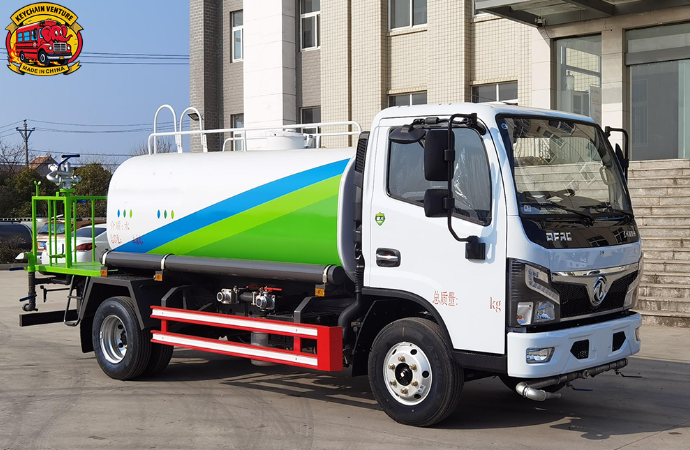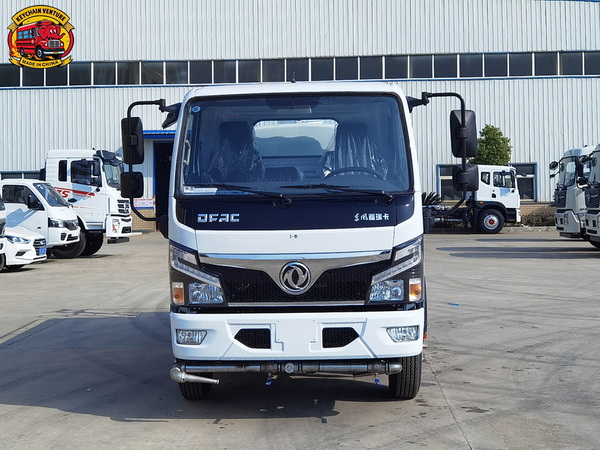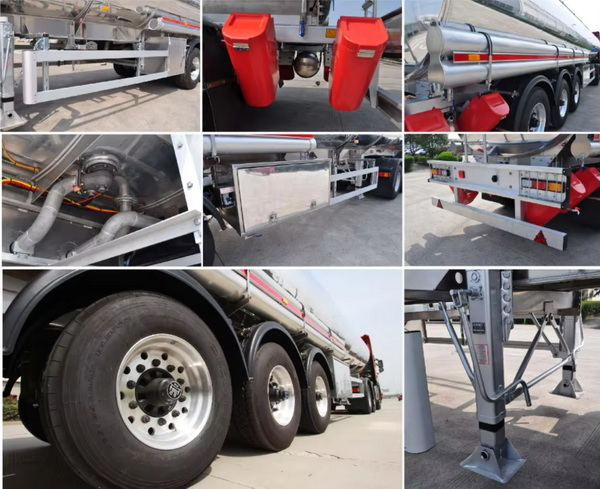Views: 222 Author: Amanda Publish Time: 2025-11-07 Origin: Site








Content Menu
● Importance of Safe Water Truck Operation
● Essential Do's for Water Truck Drivers
>> Pre-Operation Inspections and Readiness
>> Operator Training and Competence
>> Load Management and Handling
>> Spraying and Delivery Techniques
>> Winterizing and Cold-Weather Readiness
● Efficient and Safe Operations Across Environments
● Operator Wellness: Noise, Vibration, and Ergonomics
● Proactive Maintenance Practices
● Environmental Stewardship and Compliance
● Situational Awareness and Best Practices
>> Reversing and Shutdown Procedures
● Safety Protocols and Emergency Readiness
>> Fire Safety
● Training and Certification Nuances
● Frequently Asked Questions (FAQ)
>> 1. What is the safest way to transport water in a Water Truck?
>> 2. How do I prevent mud and pothole formation when spraying?
>> 3. What training is required to operate a Water Truck?
>> 4. How should a Water Truck be winterized?
>> 5. What maintenance does a Water Truck require?
Water Truck operations are a cornerstone of dust control, compaction, irrigation, and site maintenance across construction, mining, agriculture, and municipal projects. A Water Truck is not merely a large tanker; it is a specialized system that couples heavy vehicle dynamics with fluid mechanics. Safe and efficient operation hinges on rigorous pre-trip procedures, disciplined driving techniques, and meticulous maintenance. This guide consolidates best practices, practical workflows, and risk-mitigation strategies to help drivers, fleet managers, and site supervisors optimize performance while protecting personnel and the environment. By applying these principles, teams can sustain reliable water supply, minimize downtime, and reduce the likelihood of costly incidents on the job site.[9][10][11]

A Water Truck is a heavy-duty vehicle equipped with a large-capacity tank, pump, spray cannons or nozzles, and an operator control station. The primary purpose is to transport and distribute water for dust suppression, soil stabilization, fire suppression support, and on-site cleaning. Tanks vary widely in capacity, with common ranges from several hundred to several thousand gallons. The distribution system can feature front-mounted cannons, rear spray bars, or multiple nozzles controlled from inside the cab, enabling precise water delivery tailored to the task at hand.[12][13]
The physics of moving a large liquid load create unique safety considerations. Sloshing forces can shift weight inside the tank, influencing braking distance, steering responsiveness, and rollover risk—especially when negotiating curves, slopes, or uneven surfaces. Water Trucks impose substantial stress on suspension systems, tires, brakes, and driveline components, so consistent maintenance is essential. Furthermore, the environment around a Water Truck—construction zones, mining haul roads, and city streets—presents diverse hazards, including pedestrians, other heavy equipment, and variable ground conditions. A structured safety program reduces incident likelihood and supports regulatory compliance while maintaining productivity.[10][11][9]
- Conduct thorough pre-trip inspections of tires, brakes, hydraulics, lights, and safety systems. Document any anomalies before leaving the yard, and address them promptly to avoid on-site delays.[9]
- Check fluid levels (fuel, engine oil, coolant, and hydraulic fluids) to prevent overheating or component wear during long shifts.[13]
- Inspect the tank, hoses, valves, and spray nozzles for leaks, cracks, or blockages. Secure all fittings and ensure quick-disconnects are in good condition to prevent spills or spray misfires.[13]
- Verify safety equipment, including backup alarms, cameras, reflectors, fire extinguishers, and reflective vests, to enhance worker visibility and reduce on-site risk.[11]
- Perform a comprehensive walkaround to spot issues that instrumentation might miss. Look for fluid drips, loose mounting hardware, damaged wiring, and unusual vibrations. A visual check often reveals problems early, saving downtime and avoiding environmental incidents.[9]
- Use driver aids (spotter signals, reversing alarms) in conjunction with cameras or sensors when operating in constrained spaces or backing near personnel.[14]
- Ensure all operators complete formal training that covers vehicle handling, load dynamics, droplet or spray control, environmental considerations, and emergency procedures. Regular refreshers help maintain high safety standards and adapt to evolving equipment.[14][9]
- Include site-specific inductions that address local hazards, drainage patterns, and egress routes to reduce conflict with other operations and mitigate risk exposure on the job.[14]
- Load to manufacturer-recommended capacities, noting how partial loads influence slosh and stability. Internal baffles, where present, can improve stability, but handling characteristics still demand cautious driving and planned routing.[15][16]
- Be mindful of weight distribution across axles; avoid loading biases that could cause rear-end or front-end instability during acceleration, deceleration, or cornering.[16]
- Plan spray patterns according to the task: fine mist for dust suppression, broad spray for ground coverage, and directed jets for cleaning or targeted wetting. Select nozzle configurations that match the surface and desired infiltration rate.[10][11]
- Spray while in motion to promote even distribution and reduce puddling. Halting spray operations in potentially busy zones minimizes exposure to bystanders and equipment conflicts.[9]
- Program spray intervals or use automatic sequencing when available to maintain consistent coverage and prevent over-saturation or runoff. This helps preserve soil structure and reduces surface instability.[17][10]
- Use only the necessary number of active nozzles to maintain traction and avoid creating slippery areas. Excess water can reduce traction, leading to skids or loss of control.[10]
- In freezing climates, fully drain tanks, hoses, and spray lines to prevent damage from ice formation. Store water trucks in heated or protected locations when possible, and perform a warm-up routine before heavy use to protect hydraulic components.[10][9]
- Park on an incline during draining to ensure residual water exits through designed outlets, avoiding trapped water that could freeze and crack lines.[10]

Maintain dust suppression performance while safeguarding workers from exposure to high-velocity sprays and wet surfaces. Balanced spraying helps preserve footing and reduce respiratory risk from dust.[12]
Prioritize stable travel on haul roads and avoid oversaturation of soft surfaces that can degrade road integrity. Coordinate with mine plan and traffic management to minimize conflicts with other vehicles.[18]
Optimize route planning for irrigation coverage, crop protection, and resource conservation. Leverage flow meters and telemetry to monitor usage and support accountable water management.[11]
Consider operator comfort and endurance. Prolonged exposure to engine noise, vibration, and repetitive spray actions can lead to fatigue and reduce reaction times. Use hearing protection, seat adjustments, and regular rest breaks as part of a broader fatigue management program.[14]
- Schedule routine cleaning of the tank interior to prevent residue buildup that can affect water quality and pump efficiency. Clean screens, filters, and spray lines regularly to maintain consistent pressure and nozzle performance.[19]
- Inspect moving parts such as PTOs, reels, and cannon joints. Apply manufacturer-specified lubricants at intervals to minimize wear and extend service life.[13]
- Document wear patterns, abnormal noises, and performance changes. A proactive maintenance log helps predict component life and plan replacements before failures occur.[13]
- Minimize runoff and prevent soil erosion by avoiding over-saturation, particularly on slopes or near vulnerable drainage channels. Use calibrated spray settings and proper route planning to maintain environmental integrity.[16][10]
- Adhere to local regulations regarding water transport, spillage prevention, and fuel handling. Environmental compliance reduces liability and supports sustainable operations.
Use GPS and route planning tools to identify the safest and most weight-appropriate paths for Water Trucks. Consider bridge ratings, tunnel heights, and road overweight restrictions to avoid transit holds or fines.[11]
In busy or confined spaces, employ a trained spotter to guide maneuvers. A spotter reduces risk during backing and tight-turn operations when sightlines are limited.[14]
Establish standard operating procedures for stopping, lowering spray arms, and disengaging the PTO. Clear communication between the cab and ground personnel is essential to maintain safety during shutdown sequences.[14]
Equip the Water Truck with appropriate extinguishing equipment and ensure operators know how to respond quickly to a vehicle fire or spray nozzle ignition scenario. Regular drills help sustain readiness.[11]
Train operators in basic first aid, injury reporting, and evacuation routes. A practiced response improves outcomes in case of an on-site accident.[20]
Maintain detailed logs of incidents, near-misses, and maintenance events. A robust audit trail supports continuous improvement and regulatory compliance.[20]
- Licensing: Depending on the region, operators may require specific commercial licenses for tanker or heavy vehicles. Ensure driver qualifications align with local transport regulations and insurance requirements.[20]
- Continuous Improvement: Encourage a culture of learning through post-job reviews, operator coaching, and sharing field experiences. Continuous feedback helps shorten the learning curve for new drivers and reinforces safe practices.[14]
Operating a Water Truck requires disciplined procedure, professional training, and a proactive safety culture. By implementing thorough pre-use inspections, maintaining awareness of load dynamics, conducting precise spraying, and embracing a robust maintenance program, drivers can deliver reliable water delivery while protecting workers, communities, and the environment. The blend of engineering rigor, practical field knowledge, and regulatory compliance constitutes the foundation for safe and efficient water distribution across diverse work sites.

The safest practice involves using full or empty tank conditions, leveraging internal baffles where available, adhering to manufacturer guidelines, and avoiding abrupt maneuvers. Always consult vehicle-specific instructions and maintain solid situational awareness during transit.[15][16][20]
Spray only while moving, with the minimum effective water volume for the task. Utilize programmed spray patterns and target-specific nozzles to avoid over-wetting, which can create mud hazards and ground instability.[9][11][10]
Formal training covering vehicle handling, load dynamics, spray control, and environmental safety is essential. Regular retraining and site-specific inductions further bolster safety and compliance.[20][9][14]
Drain all water from tanks and lines, implement proper storage practices, and avoid exposing components to freezing temperatures. If possible, park in a sheltered area and perform warm-up routines before resuming heavy use.[9][10]
Follow a structured maintenance plan that includes cleaning tanks and pipes, inspecting tires and brakes, verifying pump performance, and replacing worn parts. Adhere to manufacturer recommendations to maximize reliability and lifespan.[19][13]
[1](https://developer.mozilla.org/zh-CN/docs/Web/HTML/Reference/Elements/Heading_Elements)
[2](https://blog.csdn.net/2401_83968180/article/details/144131955)
[3](https://www.cnblogs.com/52php/p/5657628.html)
[4](https://www.ytcaptain.com/archives/portfolio-item/heading-tag-seo)
[5](https://www.eyoucms.com/news/seo/29639.html)
[6](https://edu.51cto.com/article/note/1832.html)
[7](https://www.chateach.com/seo/seosuanfa/415)
[8](https://seo.yiguotech.com/archives/h1-tags)
[9](https://www.customtruck.com/blog/water-truck-safety-tips/)
[10](https://currysupply.com/how-operate-water-truck-safely-hazards/)
[11](https://madcorentals.com/blog/tips-for-efficient-water-truck-operation/)
[12](https://www.customtruck.com/water-truck-101-everything-you-need-to-know-about-these-bulk-water-carriers/)
[13](https://ledwell.com/how-to-operate-a-water-truck/)
[14](https://wabash.ca/water-truck-safety-101/)
[15](https://www.reddit.com/r/Construction/comments/1fgecou/driving_a_water_cart/)
[16](https://www.loadkingmfg.com/2022/02/water-truck-safety-tips/)
[17](https://minesafetyinstitute.org/wp-content/uploads/2019/06/water-truck-safety.pdf)
[18](https://wabash.ca/the-ultimate-guide-to-water-trucks/)
[19](https://www.boomandbucket.com/blog/maximizing-the-potential-of-water-trucks)
[20](https://ledwell.com/frequently-asked-questions-about-your-water-truck/)